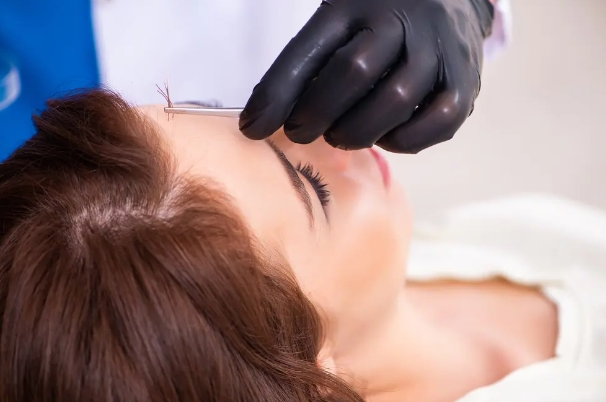Hair Loss Prevention
Laser hair loss therapy, also known as low-level laser therapy (LLLT) or red light therapy, is a non-invasive treatment option that aims to stimulate hair growth and prevent further hair loss. Here’s an overview of laser hair loss therapy:
How it works: LLLT uses low-power lasers or light-emitting diodes (LEDs) to emit red or near-infrared light onto the scalp. The light energy is absorbed by the hair follicles, stimulating cellular activity and promoting hair growth. It is believed to increase blood flow to the hair follicles, improve nutrient delivery, and enhance the production of adenosine triphosphate (ATP), which is an energy source for cells.
Types of devices: Laser hair loss therapy can be administered using different devices. These can range from handheld devices that you can use at home to larger devices used in professional settings. The treatment duration and frequency can vary depending on the specific device and its power output.
Effectiveness: While the exact mechanisms of how LLLT promotes hair growth are not fully understood, some studies suggest that it can be beneficial in certain cases. It may be more effective for individuals with androgenetic alopecia (pattern hair loss) rather than other types of hair loss conditions. However, individual responses to laser therapy can vary, and results may not be the same for everyone.
Safety: LLLT is generally considered safe when used as directed. It is non-invasive and does not cause pain or discomfort. There are minimal side effects reported, such as temporary scalp redness or tingling, which usually resolve quickly after treatment. However, it’s essential to follow the instructions provided by the device manufacturer or consult with a healthcare professional to ensure proper use.
Complementary treatment: Laser hair loss therapy is often used in combination with other hair loss treatments, such as medications (e.g., minoxidil or finasteride) or topical solutions. Combining different approaches may potentially provide better results, but it’s advisable to consult with a healthcare professional for personalized advice.
Duration and consistency: The duration of treatment and the frequency of sessions can vary depending on the specific device and individual needs. Treatment protocols typically involve multiple sessions per week, and results may take several months to become noticeable. Consistency and adherence to the treatment plan are crucial for potential benefits.
Consultation with a healthcare professional: Before starting laser hair loss therapy, it’s advisable to consult with a healthcare professional, such as a dermatologist or a trichologist. They can assess your hair loss condition, provide a diagnosis, and recommend appropriate treatment options based on your specific needs.
It’s important to note that laser hair loss therapy may not work for everyone, and individual results can vary. Additionally, it may be more effective when used as part of a comprehensive approach that includes other hair loss prevention strategies and treatments.
Specialists
At Center For Hair Transplant USA, we understand that hair restoration is a unique journey for each individual. Our Specialist Hair Transplant team is dedicated to providing you with personalized solutions tailored to your specific needs and goals. With years of experience and expertise in the field, our specialists are here to guide you through every step of your hair transplant journey, ensuring exceptional results and your utmost satisfaction.




